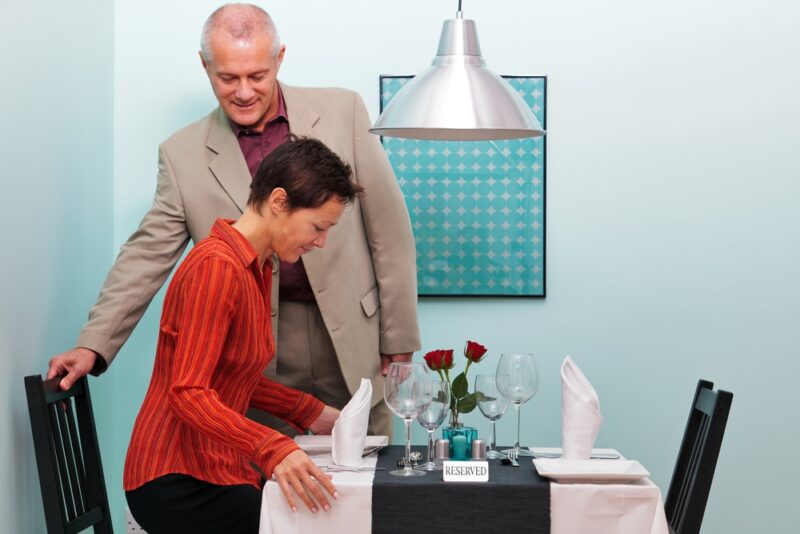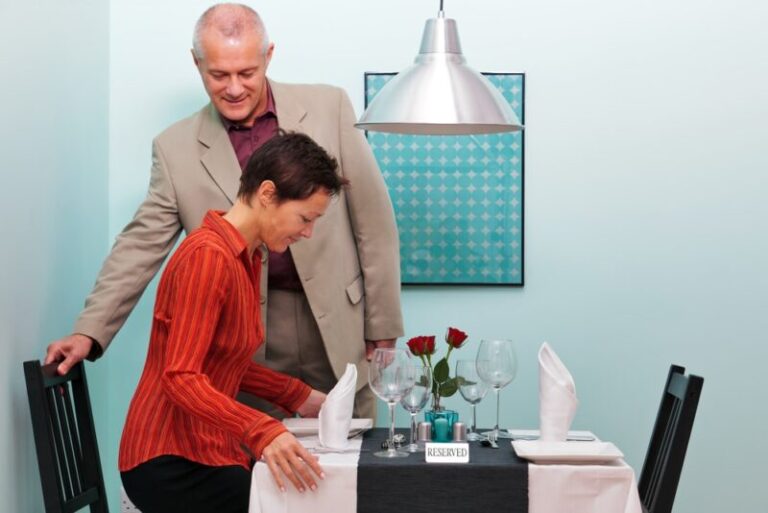
I’ve been told to “be polite” more times than I could count when I was a kid.
While we all know what that means, the idea of being “polite” is impacted by cultural and linguistic differences that might not be immediately clear if you speak Spanish as a foreign language.
So how can someone know what’s culturally acceptable in a country where Spanish is the native language?
With just a few key Spanish words and phrases, together with some tips on etiquette, you’ll be able to act accordingly, regardless of the social situation.
Contents
Download:
This blog post is available as a convenient and portable PDF that you
can take anywhere.
Click here to get a copy. (Download)
Use Usted(es) to Be Polite in Spanish
Tú (you) is the pronoun used when speaking with people you know well or those who are younger than you are. It’s not the pronoun you should use when you’re the newcomer to social or business situations.
In those circumstances, usted (you) and ustedes (you, plural) are used.
Usted shows respect while tú indicates familiarity. Usted is the proper choice for formal situations or any situation in which you’re talking to someone much older than you.
Ustedes is the correct pronoun to choose when addressing more than one person, either formally or casually.
For example:
Usted tiene un jardín muy bonito. (You have a very nice garden.)
Ustedes son amables. (You [plural] are kind.)
Spanish speakers will mostly give you a pass for not differentiating between tú and usted if they see that you aren’t a native speaker. But if you really want to earn those extra brownie points, it’s a good idea to brush up on the different conjugations for tú and usted.
Polite Spanish Phrases for Meeting People
Meeting people is very important. You have a chance to make a good impression when you meet someone for the first time. Or if you’ve already met and are just passing by each other, this is a great time to solidify that earlier good impression!
A couple of key phrases will get you through the day.
Buenos días (Good morning)
Buenas tardes (Good afternoon)
Buenas noches (Good night)
“Buenas tardes” is acceptable through the afternoon and into the evening. “Buenas noches” is used mostly after sundown.
If you’re shaking hands with someone, this short conversation makes the exchange very pleasant:
Mucho gusto (Nice to meet you)
Igualmente (Likewise)
Instead of “mucho gusto,” you can also use “encantado/a” or “un placer.” These terms also mean “nice to meet you.”
Addressing people properly is important. Fortunately, Spanish keeps titles simple.
There are three basic terms commonly used:
Señor (Mr.)
Buenos días, señor Lopez. (Good morning, Mr. Lopez.)
Señora (Mrs.)
Buenas tardes, señora Garcia. (Good afternoon, Mrs. Garcia.)
Señorita (Miss)
Buenas noches, señorita. (Good night, miss.)
There are two other ways of politely addressing people you may encounter in a Spanish-speaking country. They’re used to address elderly men and women, and they’re typically paired with that person’s first name.
Don (Mr.) and Doña (Mrs.) are terms of respect. If you have the opportunity to interact with a Spanish family, you may hear children address neighbors in this manner.
Don Eduardo (Mr. Eduardo)
Doña Sofia (Mrs. Sofia)
Polite Spanish Phrases for Making Requests
If you’d like something, feel free to request it!
The standard “May I?” works in any situation:
¿Puedo tener…? (May I have…?)
A kind, gentle way to request something is to use “quisiera” (“I would like”). It’s very polite and much less demanding than “Quiero” (“I want”).
Quisiera… (I would like…)
You can also use the verb “poder” (to be able) conjugated in the conditional form:
Podría… (Could I…)
Podría tener un café, por favor? (Could I have a coffee, please?)
Podrías… (Could you… – informal) / Podría… (Could you… – formal)
¿Podría darme la mantequilla? (Could you [formal] give me the butter?)
Polite Spanish Phrases for Everyday Life
Polite phrases for random events are useful. Keep these in your Spanish vocabulary and you’ll be prepared to face any number of everyday encounters!
If someone sneezes, say:
¡Salud! (lit: Health!)
Asking for something is a snap with these three phrases:
Por favor (Please)
Gracias (Thank you)
De nada (You’re welcome)
If you make a mistake, don’t despair! Just say:
Lo siento (I’m sorry)
Discúlpame (I’m sorry)
Perdón (I’m sorry)
When it’s time to leave, use either of these two phrases:
Adiós (Goodbye)
Hasta luego (See you later)
Lastly, politeness is important when dining, so you’ll often hear (and say):
Buen provecho (Bon appetit)
“Buen provecho” is said before anyone begins to eat and is simply an all-purpose way to wish everyone at the table a good dining experience.
Expect to hear it whether you’re eating paella in Madrid or tamales in Mexico. I’ve done both, and each time, “Buen provecho” went around the table from person to person before we began eating.
Basic Tips for Polite Interactions in Any Situation
Here are some of my tips for your journey to politeness:
- Remember to smile. Social interactions are mostly happy events, so a smile works. It needs no translation and is a good way to break the ice.
- It’s okay to indicate that you don’t understand something. Depending on your language skills, you may not understand every conversation’s meaning. We were all beginners once, and everyone realizes that. Let others know you need clarification by saying, “No entiendo.” (“I don’t understand.”)
- Handshakes are accepted as a polite way to greet someone. Women often hug when they say hello, so don’t be surprised if you’re pulled into a happy embrace.
- Cheek-kissing is common, but leaving it to friends and close relatives is okay. It’s a custom that Spanish speakers don’t usually expect visitors to embrace. If you do, fine—but don’t feel pressured to do so. Before traveling, you can check out this guide to cheek-kissing around the world, or look up the norms for the specific country you’re visiting.
- Remember that personal space isn’t always measured the same across the globe. In some countries, it’s perfectly acceptable for people to stand close when they speak to others. Look around and observe, and try to model your behavior accordingly.
- Practice makes perfect. Running through sample dialogues and watching videos of polite conversations in Spanish can help you feel less nervous when you’re doing the real thing. Native Spanish content—like Spanish podcasts on Spotify and subtitled media clips on FluentU—is especially useful since it lets you observe how Spanish speakers demonstrate social etiquette in authentic contexts. FluentU even lets you spot new phrases with the interactive subtitles on each video.
As with social situations anywhere, the golden rule is to look around to see what others are doing. Follow their lead if you need to. Remember, no one expects you to know everything. As a last resort, a quick smile and a “perdón, ¡no soy de aquí!” (I’m sorry, I’m not from here!) should help smooth over any social gaffes.
My mother was right. Politeness counts!
From the first smile to the last farewell wave, politeness makes social situations more enjoyable for everyone.
Whether you’re powering up your Spanish manner skills for travel, work, education or even romance, you’ll want to make a good impression. Use the tips and phrases to smooth the path to mutual understanding, whatever social situation you encounter.
You might arrive as a stranger, but don’t be shocked if you leave as a treasured friend!
Download:
This blog post is available as a convenient and portable PDF that you
can take anywhere.
Click here to get a copy. (Download)



